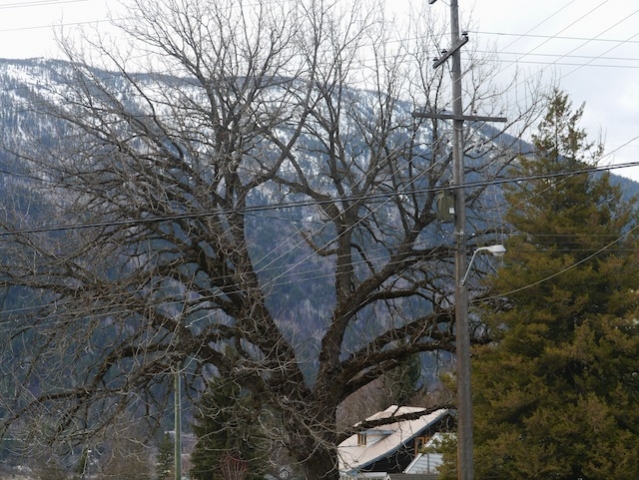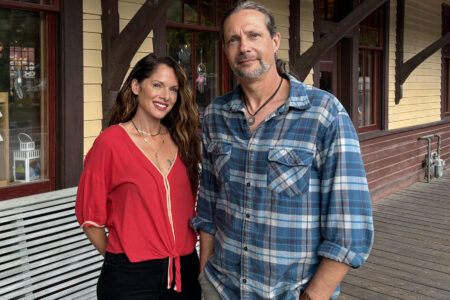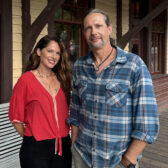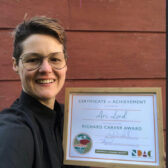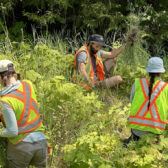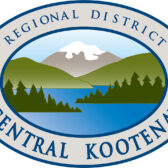Why City Council is worried about Nelson Hydro’s summer tree-pruning plans
Nelson Hydro will be doing some drastic trimming and pruning of trees throughout the city this year. This could include pruning the branches of privately owned trees.
Hydro is of course not allowed to cut down homeowners’ trees, but it can trim them without notice to the homeowner if the tree or other vegetation is too close to power lines.
City councillors appeared a bit nervous at their March 17 meeting when Nelson Hydro’s Doug Pickard told them that this year’s vegetation management program will be more drastic than ever before in a single year.
“We can expect a fair number of complaint calls,” Pickard said.
“This will bring drastic changes to some neighbourhoods,” said Councillor Donna Macdonald. “Some of the pruning in the past has been quite brutal. We hope you will hire someone who will do it in a sensitive way, for the trees and for the people who care about the trees.”
Mayor John Dooley was concerned about the quality of advance communication with the public.
“How you are giving out the information to the public should be part of the request for proposals,” Dooley said. “What would they do around messaging, so we don’t have to carry the ball? The person we hire has to have the same values we have.”
Pickard said the trimming and pruning would be done according to specific industry standards (see below) that address the distance between trees and various kinds of power lines.
He told council that the reasons for the program are safety of the general public, reliability of the power supply, and a reduction of future pruning costs. Pickard said 40% of power outage time in Nelson is due to trees falling on or otherwise interfering with power lines.
“Will they use best arboreal practices and directional pruning?” asked Councillor Paula Kiss. “You need to make sure they follow best practices, and reduce the need in the coming years.”
Councillor Robin Cherbo suggested that details about the program should be sent out as part of hydro bills.
“Parks has a tree replacement plan,” said Councillor Candace Batycki. “Are you coordinating with that? We don’t want to take out any trees without discussion with parks or public works.”
Pickard said the parks and the fire department staff at the City of Nelson are both onside with the plan and that public works has taken part in the planning.
“Our community is passionate about many things, and one of them is trees,” said Macdonald. “This will affect many people, and I understand you have made a good case that it is essential, but it is not going to be easy.”
Pickard told The Nelson Daily that the pruning program will start in late April on some of the main arterial streets in Nelson, and then begin in the east end of Fairview and move west through Uphill.
The pruning program will be based on the following standards as included in Pickard’s presentation to council:
- Five-meter minimum clearance from transmission lines (in our case 60kV) with zero branch over-hang allowed.
- Three-meter minimum clearance from overhead high voltage distribution lines ( 750V up to 34kV), with the exception of large stem conifer tree boles that may, if deemed suitable by Nelson Hydro, remain with a minimum clearance of 1 meter. Branch overhang is allowed, but the vertical clear zone above the wire must be enough to allow branches to swing down and fall clear of the wire below.
- One-meter minimum clearance from all overhead low voltage (less than 750V) lines over public property or between poles on private property. The last span of low voltage line (ie: pole to house) over private property remains the property owner’s responsibility.
- One-meter minimum clearance from all overhead communication lines attached to Nelson Hydro poles over public property. This is usually side and underneath clearance.
- Three-meter minimum clearance from the front of any pad-mount transformer, and 1 meter minimum clearance from each of the sides and the back of the transformer. Landowners often plant shrubs to hide these units, but these clearances are needed to operate the units when switching (front) and for cooling (sides and back).


